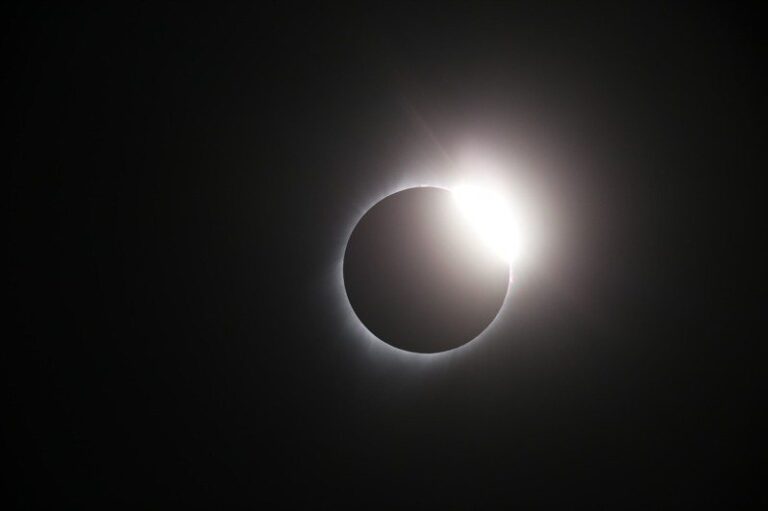
The rare sight of a total solar eclipse will soon be visible over the United States on the afternoon of April 8. Astronomy popularization writer Xie Renxiang said the total solar eclipse will last four and a half minutes. By then, the sky will be dark, the sky will be filled with stars, and the Sun will become a “black hole” that will emit white light around the wheel. “It will be the most spectacular astronomical event that can be seen from the ground.”
Since I missed seeing it, I will have to wait another 20 years before I have the opportunity to see this rare astronomical spectacle in the United States. It is expected that thousands of people will join “Daily”.
Xie Renxiang is a famous astronomical science writer from China and the greatest writer from the United States.SugarFounder of the American Shepherd Astronomical Society, an astronomy science popularization organization, and founder of the Shepherd Astronomy Forum, the largest Chinese astronomy community website in the world.
Xie Renxiang said that if you have binoculars, you can safely point the binoculars at the sun that day. You will be amazed to see that pink fiery rays are coming out from the edge of the Sun, and the corona of the Sun’s atmosphere is slowly dancing around.
formation of total solar eclipse
He explained that the Earth’s orbit around the Sun is slightly inclined to the Moon’s orbit, so it is impossible to see a solar eclipse every first day of the month. At the same time, the Moon’s orbit around the Earth is elliptical. When the Moon approaches the meridian connecting the Sun and the Earth (the first day of the lunar month), the Moon’s shadow may fall on some areas of the Earth’s surface.
Once the Moon is close to Earth at this time, the Moon may cover the entire solar disk, and humans on Earth will see a total solar eclipse. If only part of the Sun is covered, it is a partial solar eclipse; If the Moon is far from Earth on the first day of the lunar month, it may cover only the central part of the Sun, creating a solar eclipse. Annular solar eclipse.
Equipment to view total solar eclipse
What preparations should I make when viewing a total solar eclipse? Xie Renxiang said that a pair of light filters is an indispensable tool. Generally, Bader membrane (solar filter) and welding eye protection filter glass are used. He reminded that only during a total solar eclipse when the Sun is completely obscured by the Moon, you can see the Sun directly without any filter. Remember that no matter what type of partial eclipse phase the solar eclipse is in, you need to use a filter to reduce the light before viewing.
Additionally, you can also use a telescope on a tripod to project the image of the Sun onto a white cardboard to view the solar eclipse. You can also use the principle of tiny hole imaging (pinhole imaging) to image the Sun during an eclipse.
How to photograph a total solar eclipse
Xie Renxiang said that SLR cameras, mirrorless cameras and even smartphones can take photos of the total solar eclipse, but remember to use filters to reduce the light during the partial eclipse phase, and you will be able to capture the full solar eclipse. Can shoot directly during eclipse phase. SLRs and mirrorless cameras will be able to use a lens 400mm or above, preferably 600 to 800mm, manual gear, ISO 400, aperture around f/5.6, bracketing metering and shutter speed 1/10 to 1/1000 sec. Will be able to use up to. Automatic bracketing.
In this way, the Moon’s surface, solar prominences, and the Sun’s atmospheric corona can be displayed simultaneously through HDR multiple photo overlays. He said that if you want to take a wide-angle photo with a landscape, you can try two more to make sure the landscape is not underexposed, and the sun is not overexposed so that the black disk is not visible. Of course, you can also use automatic bracketing metering, and use HDR for superimposition and synthesis later.
Where and when can you see total solar eclipse
On this total solar eclipse, the complete eclipse belt will cover 15 states. First of all,texasThe U.S.–Mexico border enters the continental United States and then crossesoklahomaEnters the four Maritime provinces of Arkansas, Tennessee, Missouri, Illinois, Kentucky, Indiana, Ohio, Pennsylvania, New York, Vermont, New Hampshire, Maine, and then Canada and the Atlantic Ocean.
local(tagstotranslate)texas